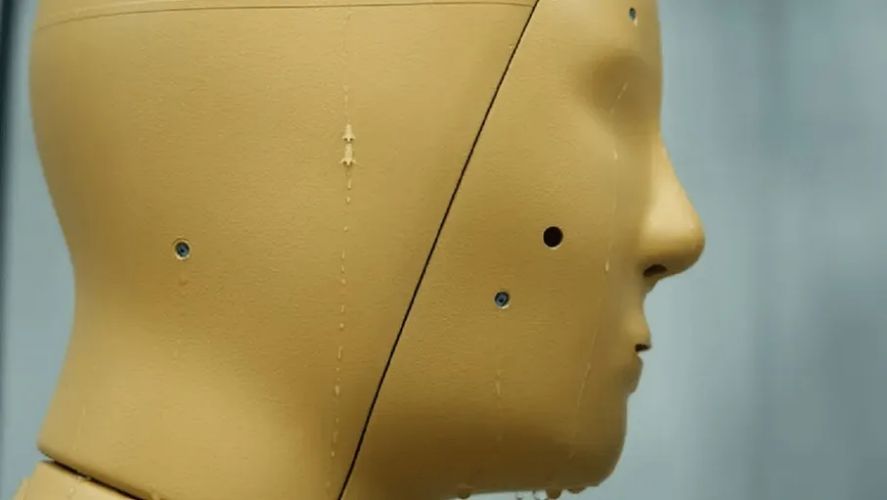
-
Published: 11 June 2023

Scientists said that they have developed the first robot that "breathes, sweats, trembles," from which it then has the ability to cope with different temperatures and adapt to them.
Edited by| Hugh Gey
Technology section - CJ journalist
Arizona - June,11,2023
"Andi" ANDI, as it is called, the" thermal model " that senses heat, is characterized by the presence of 35 surfaces with an individual control system and pores that secrete sweat granules just like humans.
The robot was designed by the American company "thermatrix"Thermetics in order to be accessible to researchers at Arizona State University, and the purpose behind its development is to help achieve a better understanding of the health effects posed by extreme temperatures on the human body.
"Andy sweats, generates heat, shivers, walks and breathes," said Konrad rekajewski, lead researcher at the Arizona State University research project, which aims to identify and measure the effects of extreme heat on humans.
"Scientists are doing a lot of great research in extreme heat, but we still lack a lot of information as well . For our part, we are trying to find a good understanding of how heat affects the human body so that we can next come up with the amount of designs that counteract it," added reykjavski.
A number of clothing manufacturers have already started using some of the ten sweating robots developed by the researchers, but Arizona State University's robot is the only one that can be used outdoors.
This feature allows conducting experiments in previously impossible extreme thermal environments, as well as advancing studies on the effect of solar radiation.
This summer, researchers at Arizona State University plan to conduct tests on "Andy" in Heat-exposed areas around the city of Phoenix, in an attempt to find out the effects that high temperatures have on different ages and bodies.
Ankit Joshi, a research scientist at Arizona State University who oversees the modeling work and Andy's main operator, said that it is possible to transfer various models of body mass index, different age characteristics, and various medical conditions to "Andy".
Joshi gave an example of " a diabetic patient whose thermoregulation in his body is different from that of a healthy person. Therefore, we can take into account all these changes using our models designed to suit each individual case".
The results of the research will be used by scientists to create auxiliary designs, such as body cooling clothing, technologies that protect against sunstroke and deaths associated with extreme heat.
{source}<script async src="https://pagead2.googlesyndication.com/pagead/js/adsbygoogle.js?client=ca-pub-4474625449481215"
crossorigin="anonymous"></script>
<!-- moss test ad -->
<ins class="adsbygoogle"
style="display:block"
data-ad-client="ca-pub-4474625449481215"
data-ad-slot="6499882985"
data-ad-format="auto"
data-full-width-responsive="true"></ins>
<script>
(adsbygoogle = window.adsbygoogle || []).push({});
</script>{/source}
